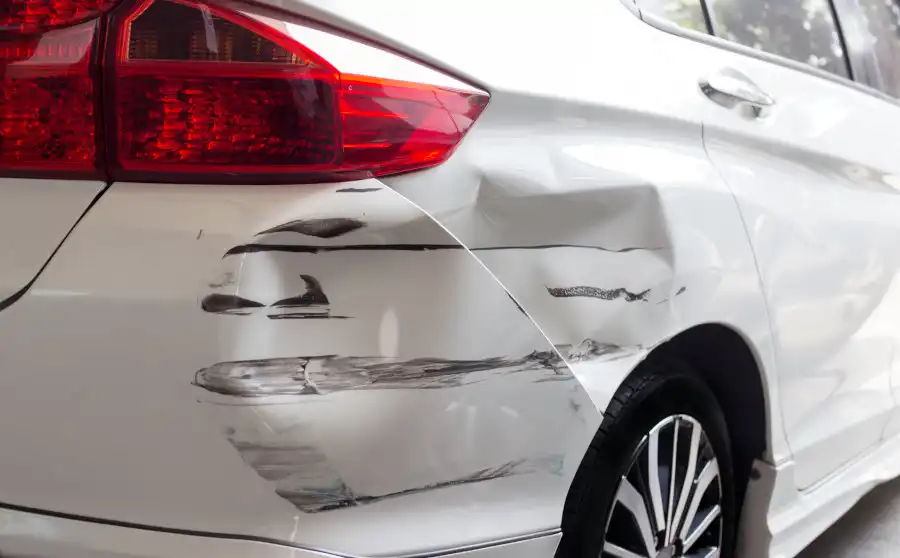California Hit-and-Run Defense: VC 20001, VC 20002, VC 20003
When you're looking for a "California hit-and-run lawyer" or "Bay Area hit-and-run attorney," especially when a crash involves DUI or a commercial driver, you need clear answers about the law, the consequences, and your defense options. At Ginny Walia Law Offices, we serve clients across the Bay Area with strong criminal defense, including hit-and-run under the California Vehicle Code.
This page explains the key statutes (California Vehicle Code § 20001, California Vehicle Code § 20002, and California Vehicle Code § 20003), the difference between misdemeanors and felonies, how DUI or commercial driver status changes things, and how a skilled "DUI defense lawyer" or "truck-driver DUI attorney in the Bay Area" should approach your case.
Legal Statutes: What the Law Says
Property Damage Only – VC 20002
Under VC 20002, a driver involved in an accident that results only in property damage has a duty to:
- Immediately stop the vehicle at a safe location that does not impede traffic or jeopardize safety.
- Provide his or her name, current residence address, vehicle registration number, and, if requested, driver's license.
- If the driver is not the owner of the vehicle, provide the owner's name and address.
- Alternatively, leave a conspicuous written notice on the damaged vehicle/property and without unnecessary delay notify police (city PD or CHP).
Failure to comply is a misdemeanor.
Injury or Death – VC 20001
Under VC 20001, when a driver is involved in an accident that results in injury to another person (other than the driver) or in death, the duties are stricter:
- Stop the vehicle immediately at the scene.
- Provide reasonable assistance to any injured person (which may include calling 911 or arranging medical care).
- Provide the same identifying information as above (your name, address, vehicle registration, etc.).
- If requested and where applicable, show driver's license and provide owner information if you're not the registered owner.
- Without unnecessary delay, notify the proper law enforcement agency (city police or CHP).
Important: These duties apply regardless of who caused the accident. Even if it wasn't your fault, leaving the scene or failing to give required information can trigger the hit-and-run statutes.
Additional Statutes: VC 20003 and VC 20004
These sections set out more detailed requirements regarding reporting and assistance when injuries or death occur (for instance, property damage plus bodily injury/death). The prosecution may rely on these in conjunction with VC 20001.
Felony vs. Misdemeanor: What That Means in California
Misdemeanor (Property Damage Only)
If the only damage from the accident is to property, the offense under VC 20002 is a misdemeanor. The legal maximums typically are:
- Up to 6 months in county jail.
- Fine up to $1,000 (plus restitution and other assessments).
- Two DMV "points" may be assessed on your driving record.
Wobbler: Injury/Death (VC 20001)
When injuries or death are involved, VC 20001 is a "wobbler" offense—meaning the prosecutor can charge it as either a misdemeanor or felony, depending on the facts.
If charged as a misdemeanor:
- Up to 1 year in county jail.
- Fine up to $10,000.
If charged as a felony:
- If accident caused general injury: 16 months, 2 years, or 3 years in state prison (sometimes county).
- If accident caused death or permanent serious injury: 2, 3, or 4 years in state prison.
- Fine up to $10,000.
Charged with hit-and-run? The difference between a misdemeanor and felony can change your life. Contact us immediately for a defense strategy tailored to your case—whether property damage, injury, or DUI-related.
Commercial Driver / DUI Factor
While the statutes above apply generally, defendants who are commercial drivers (CDL holders) or who combine hit-and-run with a DUI (California Vehicle Code § 23152) face heightened attention from prosecutors, greater stakes (such as loss of commercial driving privileges), and more complex consequences. It's critical to hire a skilled DUI defense lawyer or truck-driver DUI attorney in the Bay Area if these factors apply.
Consequences Beyond Jail Time
- Driver's license consequences: A hit-and-run record may result in DMV action, points on your driving record, and suspension or revocation (especially for commercial licenses).
- Insurance and civil liability: Even after criminal matters resolve, victims may pursue civil claims for property damage, medical costs, lost wages, etc.
- Criminal record: A felony conviction triggers collateral consequences — employment issues, professional licensing, immigration risks (if applicable), and more.
- Restitution & fees: Courts often require payment of restitution to the victim(s) and must impose fines and fees per California assessment law.
CDL Holders: If you're a commercial driver, a hit-and-run—even if only property damage—can trigger investigations by the DMV, potential suspension of your CDL, and severe employer consequences. If a DUI is involved, your CDL may be revoked or you may face disqualification under FMCSA rules.
Procedure: What Happens When You're Charged
1. Investigation & Arrest
Law enforcement gathers evidence (scene photos, witness statements, surveillance, vehicle damage, etc.).
2. Booking & Arraignment
If arrested, you appear in court and the charges are read; bail may be set.
3. Plea Phase / Preliminary Hearing
For felonies, there may be a preliminary hearing to establish probable cause.
4. Discovery & Motion Practice
Your hit-and-run lawyer will gather evidence, challenge the state's theory (e.g., did you know of the injury? Did you truly flee?).
5. Negotiations / Plea or Trial
Depending on strength of defense and facts (DUI involvement? commercial driver? death or serious injury?), prosecutors may offer plea bargains; trial may follow if no agreement.
6. Sentencing & Post-Conviction
If convicted or you plead, sentencing occurs; you may face jail/prison time, fines, probation, license suspension, and other penalties.
Defenses in Hit-and-Run Cases
A knowledgeable Bay Area DUI defense attorney will evaluate multiple potential defenses, such as:
- No Knowledge: You may not have known you were involved in an accident, or you reasonably believed no one was injured. For VC 20001, knowledge of injury is required for the felony version.
- You Weren't the Driver: Someone else may have been driving the vehicle, or the identification of you as driver is challenged.
- No Injury or Death: If only property damage exists, prosecution must use VC 20002, not VC 20001. If they file under VC 20001 wrongly, defense may challenge.
- You Didn't Flee: Maybe you stopped, attempted to exchange information, but law enforcement misinterprets the facts. Or an emergency forced your departure.
- Mitigating Circumstances: Medical emergency, unconsciousness, or other factor prevented immediate compliance.
- Insufficient Evidence of "Duty" or Proper "Notice": Did you actually provide the required information, were you requested, etc.
- Civil Compromise (Property Damage Cases): In some misdemeanor cases, compensating the victim may result in charges being dismissed or reduced.
Commercial driver facing hit-and-run charges? We understand the unique stakes for CDL holders—from DMV disqualification to employer consequences. Let us protect your livelihood and your license.
Why Choose a DUI/Hit-and-Run Attorney in the Bay Area?
In the Bay Area (including Alameda County, Contra Costa, Santa Clara, San Mateo), local procedures, court culture, and DMV environment matter. Choosing a lawyer who is familiar with the region, knowledgeable in both DUI defense and hit-and-run law, and has handled commercial driver cases is essential.
- 20+ years of experience defending hit-and-run cases—from property damage misdemeanors to felony injury/death cases.
- DUI & CDL expertise: We understand how hit-and-run intersects with DUI charges (VC 23152, VC 23153) and commercial driver licensing issues.
- Local court knowledge: Deep familiarity with Bay Area prosecutors, judges, DMV procedures, and negotiation strategies.
- Aggressive defense: Challenging knowledge, identity, and duty elements; filing suppression motions; negotiating charge reductions.
- Protecting your future: Minimizing license consequences, employment impact, insurance issues, and criminal record damage.
In Summary
If you are facing hit-and-run charges in California — whether as a Bay Area driver, a commercial truck driver, or alongside a DUI accusation — the stakes are high and the law is complex. With the right hit-and-run lawyer in the Bay Area, you'll get tailored defense on the statutes (VC 20001, VC 20002, VC 20003), local court and DMV procedures, and strategies specific to your situation. The sooner you act, the stronger your position.
At Ginny Walia Law Offices, we combine decades of experience in criminal defense and serious vehicle offenses—including DUIs and hit-and-run cases—to give you strong representation when it matters most.



